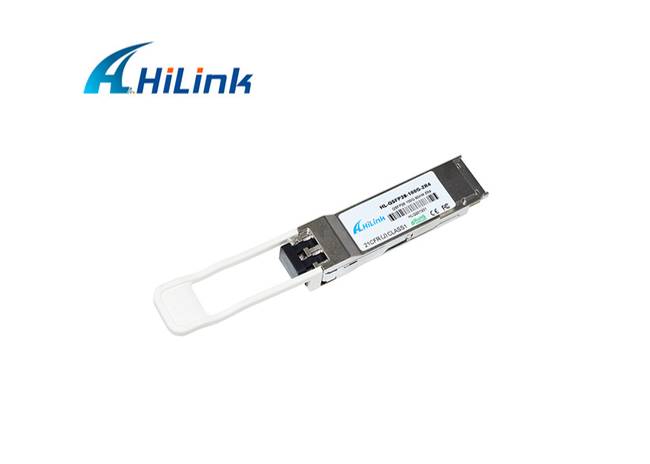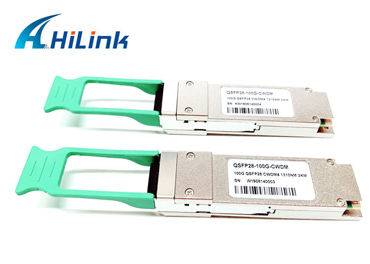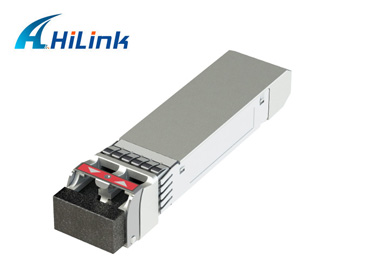100g Optical Module Laser Chip With Silicon Optical Technology
Aug. 17, 2022
At present, 100G network architecture has become the mainstream architecture of data centers and has driven the prosperity of the 100G optical module industry. In the long run, data centers still have the demand for a continuous upgrade, and the industry generally believes that 400G network architecture will be the evolution direction of the 100G network, and will drive the market demand and technical innovation of 400G optical module, among which optical module laser technology is an important focus. Next, the optical module supplier will introduce a 100G optical module laser chip and silicon optical technology.
Optical module core components of the laser chip
Optical modules are packaged by a variety of optical devices, the internal components of the laser chip are the more critical part, accounting for 60% of the cost of optical modules, mainly affecting the transmission distance of optical modules. The main types of lasers are: VCSEL, FP, DFB, DML, and EML, different types of lasers have different working wavelengths, modes, and application environments.
100G QSFP28
100G optical module laser chip and silicon optical technology
In the 100G optical module market, the 100G QSFP28 optical module has a large market share, and different QSFP28 optical modules use different lasers as mentioned above.
100G-SR4 QSFP28 packaged optical modules, mainly used for multimode parallel solutions within 100m, which mostly use VCSEL lasers inside, VCSEL lasers have the advantages of small size, high coupling rate, low power consumption, easy integration, and low price.
100G-ER4 QSFP28 and 100G-LR4 QSFP28 packaged optical modules, mainly used for medium and long-distance single-mode solutions around 10km, which mostly use EML lasers internally, and EML lasers have advantages such as large eye diagram margin, small dispersion, large extinction ratio, and long-distance.
100G-CWDM4 QSFP28 package optical module, mainly used for 2km coarse wavelength division multiplexing scheme, which mostly adopts DML laser inside, DML laser has the advantages of small size, low power consumption, low cost, etc.
For the 100G-PSM4 QSFP28 package optical module, there is a new breakthrough in chip technology - Intel's silicon optical hybrid integrated 100G PSM4 optical module for data center scenarios has long been in mass production, and due to lower BOM (parts material) cost advantage occupies 80% of the market share of PSM4 products, mainly for 4-channel parallel single-mode solutions below 500m.
100G QSFP28 CWDM4
The advantages and challenges of silicon optical technology in the optical module industry
The current technology route of optical integrated commercial products is mainly divided into two camps, InP and Si. Among them, DFB, DML, EML, and other lasers are InP camp, although the technology is relatively mature, the cost is high, incompatible with the CMOS process (integrated circuit process), and its substrate material only doubles every 2.6 years.
Si silicon optical devices, on the other hand, use the COMS process to realize passive optoelectronics and integrated circuit monolithic integration, which can be integrated on a large scale and has the advantage of high density, and its substrate material can be doubled every 1 year.
The current 100G optical module has opened the door to silicon optical technology, but its development still faces some challenges.
25GB SFP28 DWDM 20KM Transceiver
First, a silicon-based integrated laser light source to be solved. Silicon is an indirect bandgap semiconductor, compared to direct bandgap semiconductors such as InP, silicon optical modules require the introduction of a separate light source, and the light source does not comply with Moore's law, the more coupling integrated the higher the cost, will continue to offset the cost advantages of silicon materials and process integration.
Second, silicon optical module packaging is difficult, low yield. Silicon optical interface packaging is in its early stages, the main bottleneck lies in the optical interface packaging of optoelectronic chips and optical fiber array formation, the alignment and packaging of high precision requirements, packaging efficiency is low, and the current stage of packaging technology is difficult to achieve high quality, low-cost packaging, product yield limits the mass production of silicon optical modules.
In addition, silicon optical chips have fewer resources available for mass production. Although silicon optical chips are compatible with CMOS processes, mature CMOS resources are not open to the public or no silicon optical flow experience.
400G data center silicon optical technology will become the mainstream optical module.
In the long run, silicon optical solutions are the trend, and will probably make a massive push in the 400G optical module era.
For more information and consultation, please contact us.














